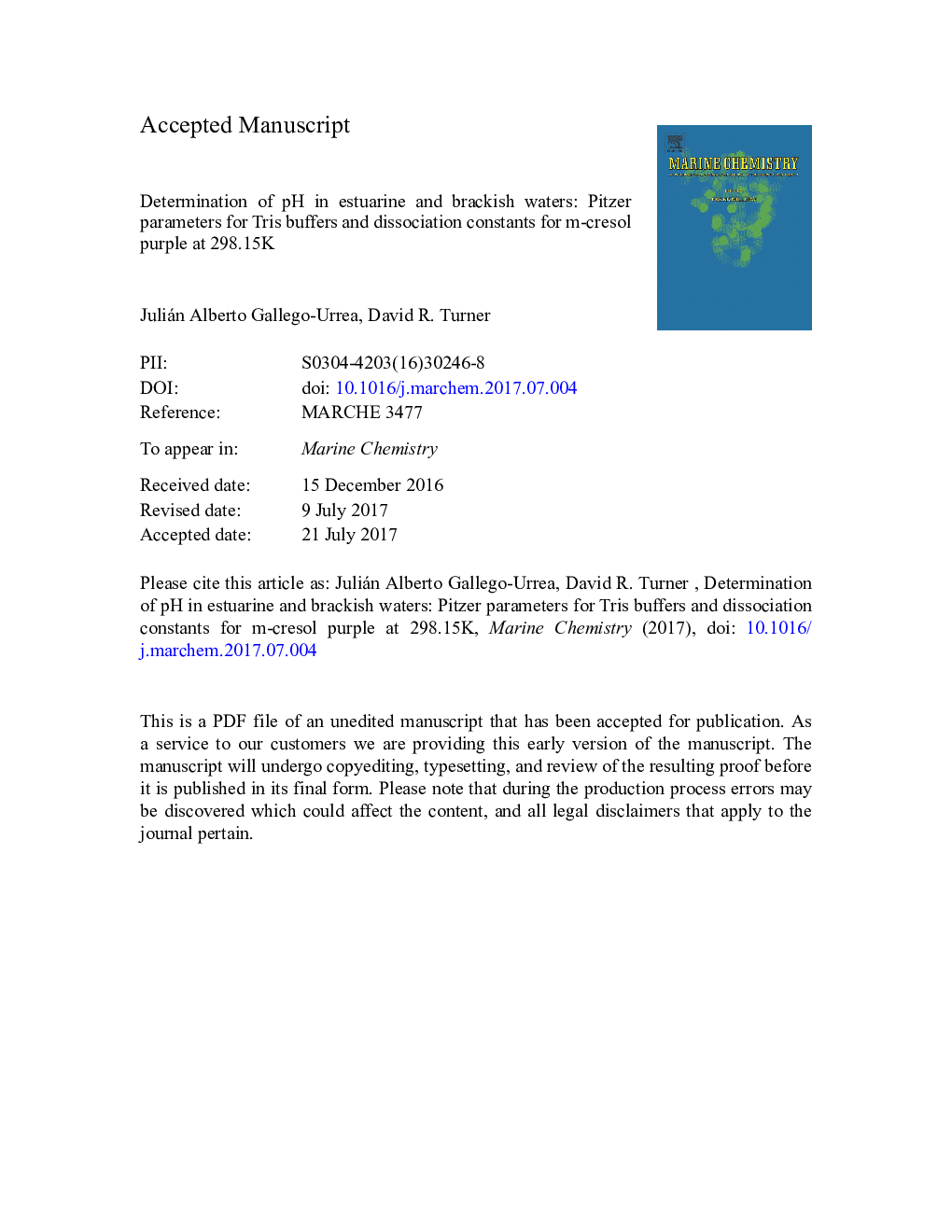| Article ID | Journal | Published Year | Pages | File Type |
|---|---|---|---|---|
| 5143603 | Marine Chemistry | 2017 | 15 Pages |
Abstract
Measurements of pH in seawater are important to determine the natural and anthropogenic trends in the oceans. Spectrophotometry or glass electrode potentiometry measurements of pH require calibration with help of buffers. One common buffer solution is the Tris/Tris·H+ couple, which should be well characterised both experimentally and theoretically for optimum accuracy. Chemical speciation modelling in the complex seawater medium is best addressed with an ion interaction approach, with Pitzer equations being the most widely used. The published Pitzer coefficients for Tris and Tris·H+ in artificial seawater are based on isopiestic measurements, which necessarily give strong weight to the third virial coefficient C for the key interaction between Tris·H+ and chloride. However, in low salinity waters it is the second virial coefficient B that is of greater importance. We have used Harned cell measurements of Tris solutions at ionic strengths up to 1 mol kgâ 1 to reassess the relevant Pitzer parameters, and have found improved agreement with experimental measurements in artificial seawater. We suggest that additional measurements should be undertaken to address the remaining differences between model calculations and experimental data in artificial seawater. We have used the revised Pitzer parameters to reassess the acid-base constant of the indicator m-cresol purple in low salinity waters.
Related Topics
Physical Sciences and Engineering
Chemistry
Chemistry (General)
Authors
Julián Alberto Gallego-Urrea, David R. Turner,
